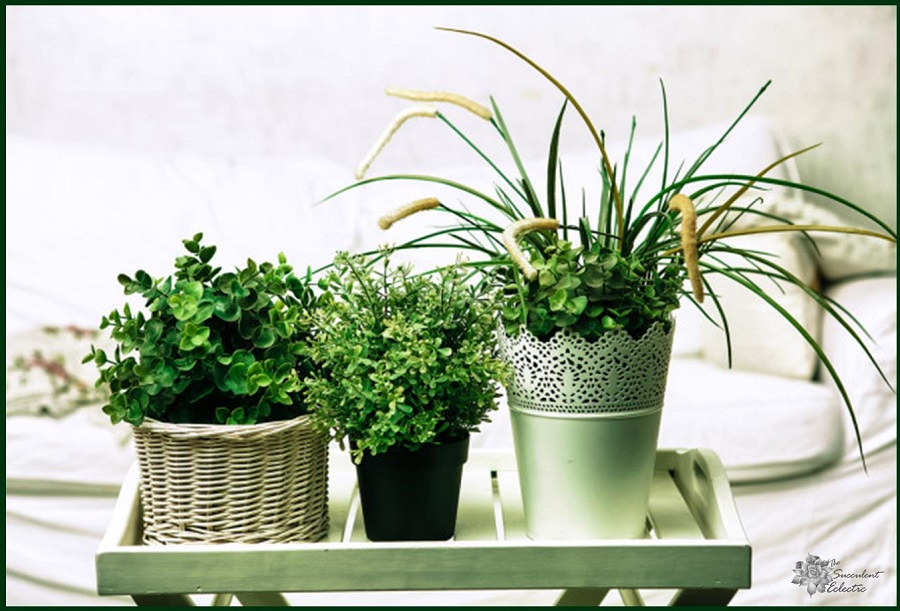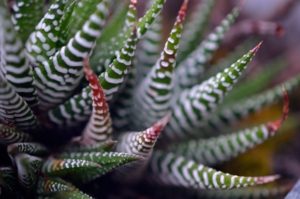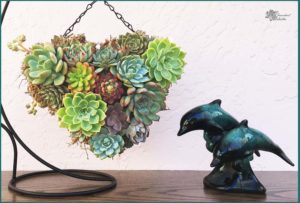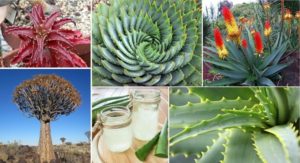Are you craving lush, beautiful plants that will thrive in your home? Low care, low maintenance varieties with personality and panache? Then look no further! This is a list of the seven best indoor succulents. Perfect for beginners, but showy enough for the most expert gardener. Some have spectacular blooms, too! Let’s take a look at my recommendations for the best succulent houseplants for you, along with their care and where/how to find them.
7 Easy Indoor Succulents
In this Post We'll Cover:
{Please note, some links in this post may be affiliate links to sites that pay me a small commission if you click on the link and make a purchase. This commission is at absolutely no cost to you. I only recommend products and companies that I have worked with and truly love! ~Kat}
What Makes for Good Indoor Succulents?
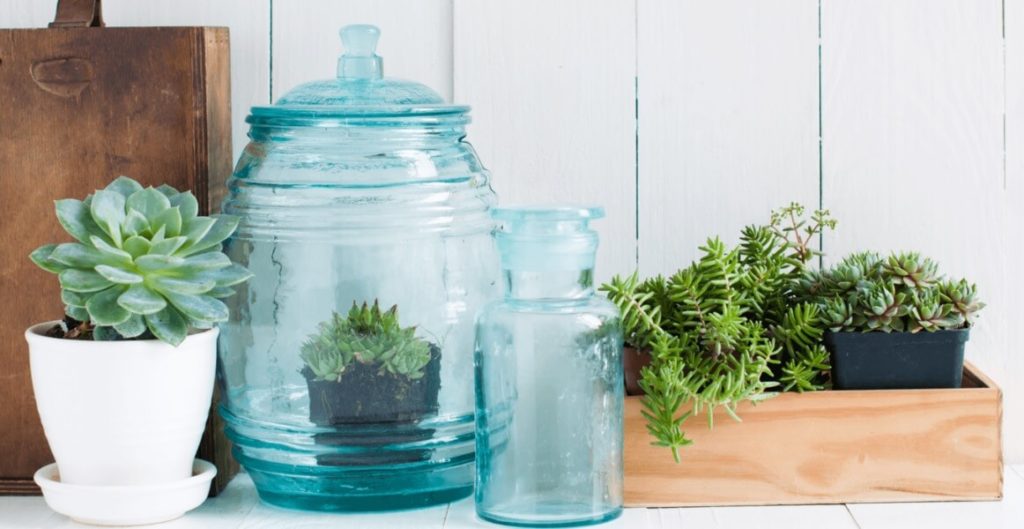
Let’s first review the characteristics that make for great succulent houseplants. Plants grown indoors will always encounter lower light and far more consistent temperatures than plants do out in the garden. So the best succulents to grow indoors are those that do not need a lot of direct sunshine and do not rely on high summer heat or winter cold to thrive. They will not stretch in the low light common to most homes. The low air circulation common to indoor growing conditions typically does not greatly affect succulents. Low maintenance is another feature that is important in selecting houseplants. So let’s look at those great indoor succulents.
Sansevieria (Snake Plant)
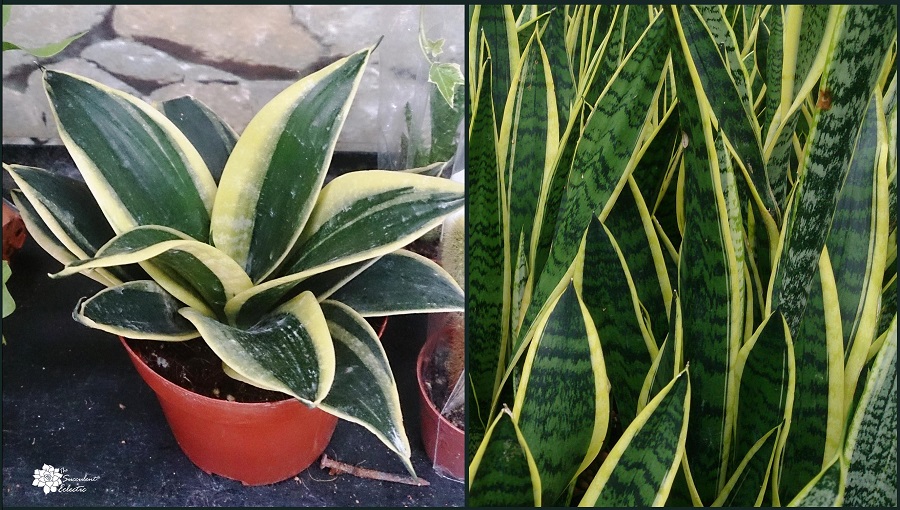
Often called “snake plant”, “mother in law’s tongue” or “bowstring hemp”, Sansevieria were enormously popular houseplants in Victorian times. Despite its popularity from ages past, Sansevieria lend a bold, modern look to your room. There are many different varieties, each with strong architectural appeal. Most have distinctive mottling to their leaves, giving rise to the name snake plant, as the markings mimic those of a snake. Some feature bright yellow margins, others are more silvery in tone. While most have strong, vertical lines, others, like the “bird’s nest” develop a more rounded, curving habit. Sansevieria arrange their leaves in rosettes around a central growing point. They do bloom, though the flowering cannot be counted upon. Plants may grow happily for years before suddenly flowering. The blooms are clusters of narrow, ivory flowers, followed by bright red or orange berries.
Indoor Succulents – Sansevieria – Lighting
Sansevieria will grow happily indoors for years. Although these succulent houseplants are perfectly healthy even with low light, a brighter light will result in more vivid coloring. These plants are so easy to please, they will grow well in nearly any soil, though I prefer a 50/50 mix of potting soil and succulent mix. This gives sufficient weight to anchor the roots well while allowing for the exceptional drainage the plants need. In addition to a robust network of roots, most sansevieria also produce rhizomesA rhizome (RI-zome) is a modified stem that grows undergroun... below the soil line. When it is time to re-pot your plant, divide the rhizomes to increase your collection of succulent snake plants. The plants do well and are more likely to bloom when they are quite root bound. Many people only transplant them when they have broken their old pot!
Indoor Succulents – Sansevieria – Watering
Sansevieria are so tolerant of neglect, they are often termed “impossible to kill”. What they do need from you is never to be over watered. Water only when the soil is quite dry. Then water thoroughly, until the water runs through the drainage holes. Then allow the soil to fully dry again before adding more water. Indoors, this often translates to watering just once or twice a month. When the leaves appear dusty, just wipe them with a damp paper towel. Avoid commercial “leaf polishing” products – the chemicals used can damage snake plant leaves. The low maintenance and easy tolerance of low lighting make Sansevieria excellent succulent houseplants.
You can find a great selection of Sansevieria varieties at Mountain Crest Gardens, at any big box store. For a broader selection of sansevieria, I shop these sellers on Amazon!
Haworthia Fasciata (Zebra Cactus)
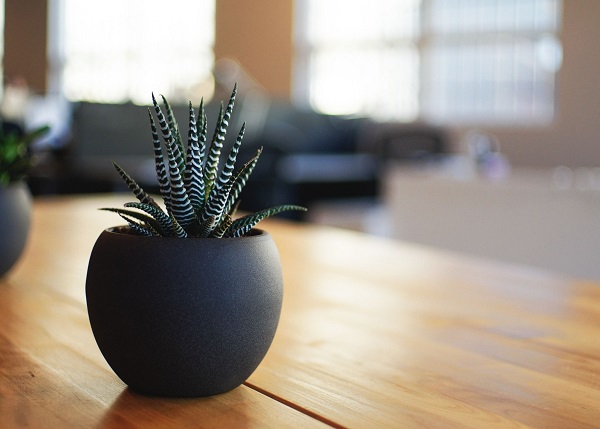
All haworthia make terrific succulent houseplants. Let’s focus on the H. fasciata, often called the zebra cactus. Tough, spiky leaves are a very deep, dark green, highlighted by snowy white “tubercles” arranged in a striped pattern. These charmers typically stay quite small, topping out at about 6 inches. Haworthia fasciata is a strikingly handsome plant with a modern, “edgy” vibe. It looks wonderful growing in black containers. Add a white top dressing for high drama.
Succulent Houseplants – Haworthia – Lighting
Specially adapted to thrive in low light conditions, haworthia are happy growing indoors for years. If you decide to move your haworthia outdoors, be sure to provide protection from direct sun, especially during the heat of the day. Indoors, the slow growth, petitie habit and low water use make haworthia zebra cactus a perfect choice to use in a terrarium.
Succulent Houseplants – Haworthia – Watering
Provide a fast draining, gritty succulent soil mix. Water thoroughly, but only when the soil is quite dry. In general, plan to water roughly every two weeks. Haworthia will certainly survive given too little water, but take care not to over water. Although the zebra cactus (not a true cactus) grows quite slowly, it is a good idea to transplant it every three years into fresh soil. This will ensure your haworthia always has sufficient nutrients available.
Mountain Crest Gardens offers an excellent selection of haworthia, and their plant quality is consistently exceptional.
Aloe Vera
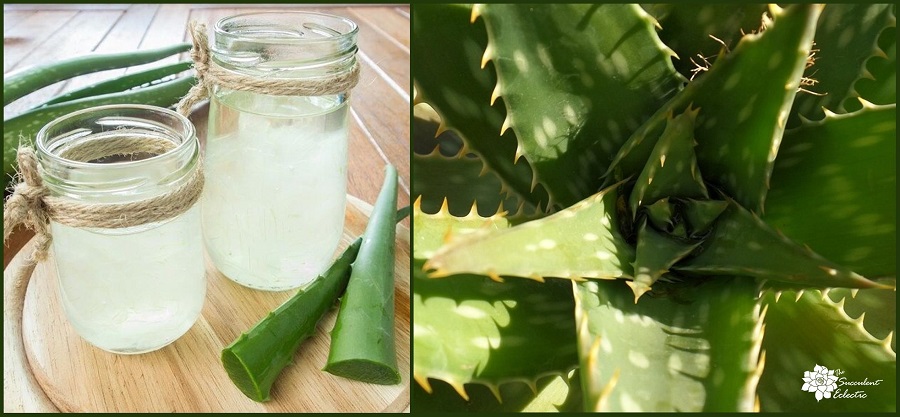
Aloe vera is widely loved for its many medicinal benefits, from treating skin conditions to soothing stomach issues to boosting your immune system. These handsome, structural plants are easy to grow indoors, where you can enjoy its many benefits straight from a cut leaf of the plant. Like the succulent houseplants above, Aloe vera gives a modern, edgy look to your décor.
Indoor Succulents – Aloe Vera – Lighting
Although Aloe vera will thrive in full, blazing sun outdoors, it also adapts readily to indoor conditions. Unlike the Sansevieria and Haworthia above, Aloe vera require a bit of attention to the lighting. Place your aloe vera in a bright spot indoors. All aloes are tender to frost, so take care by the windows in winter. Artificial lighting can supplement sunshine and help to make your Aloe vera feel right at home. While grow lights are great, your Aloe is not fussy and will appreciate even fluorescent lights.
Indoor Succulents – Aloe Vera – Watering
Like nearly all succulents, Aloe vera are well adapted to climates with little rainfall. As with the Haworthia, plant your Aloe vera in a fast draining, gritty succulent potting mix. Water only when the soil is dry through the top 1-2 inches. When watering your aloe, be generous, until the water runs through the drainage holes. Take care not to let water accumulate in the crown of the plant. Instead, water from the bottom of the plant. While Aloe vera will tolerate absent-minded care, too much water will kill your plant.
For a wide selection of aloes, including aloe vera, take a look here at Mountain Crest Gardens.
Kalanchoe blossfeldiana
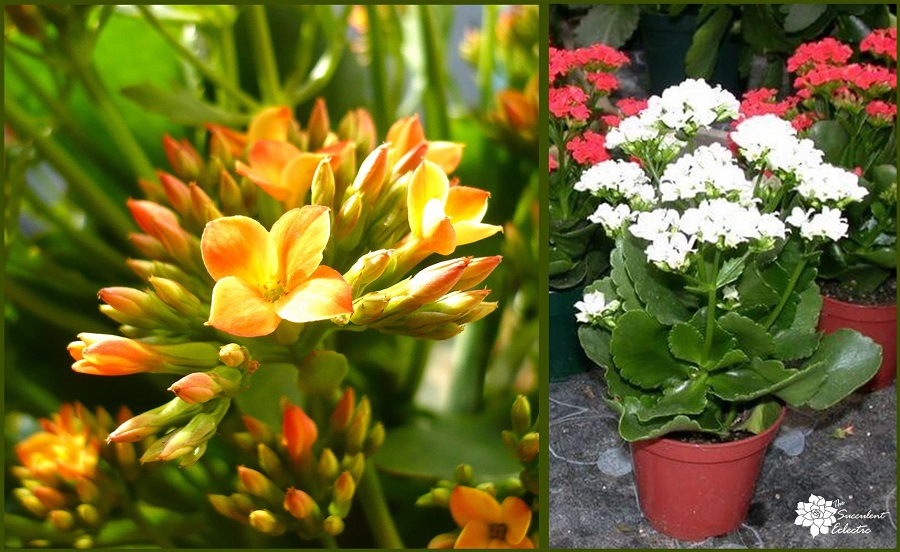
While you may not know the name Kalanchoe blossfeldiana, you have certainly seen these flowering succulents at the grocery store or home improvement center. Also called flaming Katy or florist Kalanchoe, the blossfeldiana produces masses of blooms in bright red, orange, yellow, pink and white. Newer varieties sport intricate double form blooms. Medium green leaves are wide and lightly scalloped along the edges, making a lovely frame for the bright blooms. While most people discard these plants when the blooms fade, Kalanchoe blossfeldiana make long-lived succulent houseplants that bloom throughout the year.
Succulent Houseplants – Kalanchoe blossfeldiana – Lighting
For best blooming, your Kalanchoe blossfeldiana will thrive in bright light. Outdoors, they should be protected from direct sun. Indoors, provide plenty of artificial lighting. This plant is very sensitive to cold, so take care by single-paned windows in the winter.
Succulent Houseplants – Kalanchoe blossfeldiana – Watering
You Kalanchoe is more tolerant of wet soils than most indoor succulents, but overwatering is still a danger. I plant mine in a 50/50 mix of potting soil and succulent mix. When the soil is fully dry, water thoroughly until it runs through the drainage holes. There is no need to mist the plants between waterings. Simply wipe the leaves with a damp paper towel if they become dusty.
Flowering Succulents – Kalanchoe blossfeldiana – Reblooming
When the Kalanchoe’s blooms are spent, pinch them back. This keeps the plant looking its best, and prevents it from directing energies to maintain the spent blooms. Kalanchoe blossfeldiana will often rebloom on their own, but this is the process to ensure that it does so. For a six week period, put your flower-free blossfeldiana into a closet or under a box for 14 hours each night. Alternate with regular lighting for the day. Cut back on the water by half during this period, and do not fertilize. You will see new flower buds forming in about six weeks. At that time, stop the dark nights, and resume your regular watering schedule as your plant bursts into full bloom. Feed with half-strength fish emulsion or seaweed twice each spring, and pinch back spent blooms to ensure full flowering throughout the year.
You can find Kalanchoe blossfeldiana plants at Mountain Crest Gardens, on Amazon, and at many big box store and most grocery stores.
Faucaria tigrina (Tiger Jaws)

Faucaria tigrina is a charming succulent that is crazy easy to grow indoors. Nearly identical to Faucaria felina (cat’s jaws), the plump triangular leaves sport spiky-looking, soft, white “teeth” along the edges. These leaves are arranged in pairs with their rows of “teeth” facing each other. This gives the plant the look of so many cats’ jaws. Showy, bright yellow blooms look like little fringed daisies simply covering the plant for months at a time. Easy succulent houseplants, Faucaria lend a fun and edgy vibe to your room.
Indoor Succulents – Faucaria tigrina – Lighting
For best flowering, provide your tiger jaws with plenty of bright light indoors. The plant will do very well even in dim lighting, though it likely will not bloom. Faucaria are very sensitive to cold temperatures, so take care beside single-paned windows in winter. Artificial lighting works well to keep your tiger jaws happy as indoor succulents.
Indoor Succulents – Faucaria tigrina – Watering
Plant your Faucaria in a fast draining, gritty succulent mix. Even more drought tolerant than most succulents, tiger jaws can be left completely dry for a month or more at a time. This is great to know for extended vacations, but otherwise, don’t over stress your plant with so little water. Just wait until the soil is fully dry. Then water until it runs from the drainage holes. Water from the bottom, to avoid puddling in the center of the plant, which can lead to rot.
To order your own Faurica tigrina, shop here.
Crassula ovata (Jade Plant)
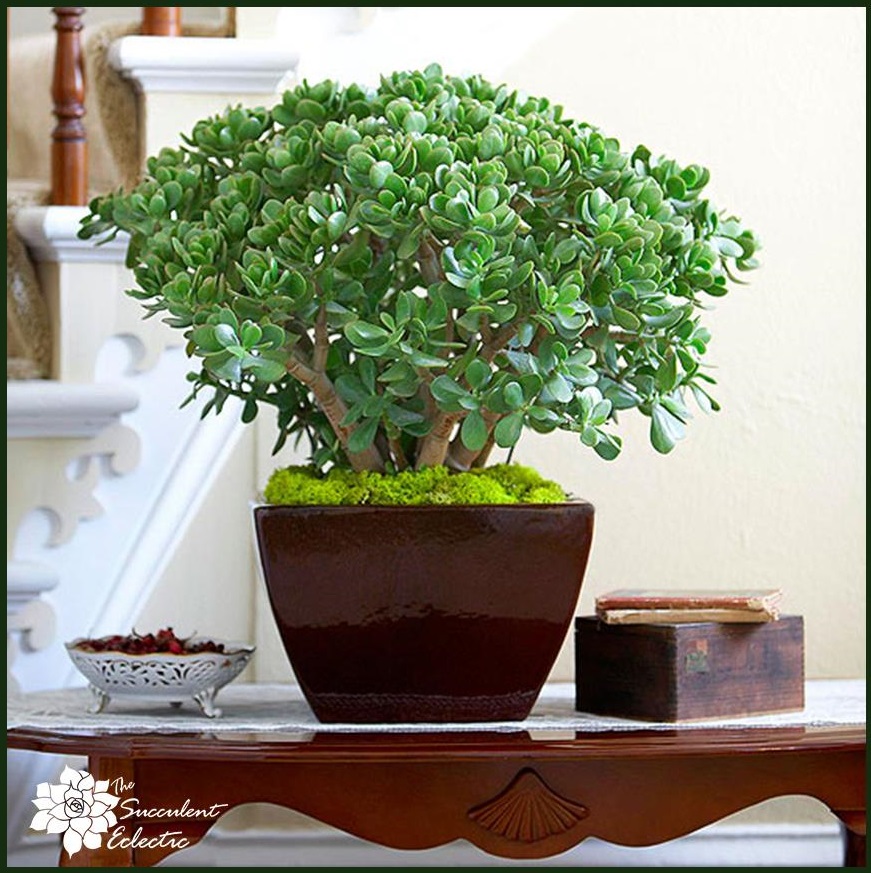
Commonly called jade plant, money plant or friendship plant, the ovata is the most widely grown of all the Crassula varieties. It is easy to please indoors. Traditionally believed to bring good fortune to the home, they were often given as housewarming gifts. Though Crassula ovata do bloom outdoors, indoors they are known for their rounded, fleshy leaves and elegant form. Prized in Feng shui, indoor succulents like jade plants will enhance any home’s style.
Succulent Houseplants – Crassula ovata – Lighting
Crassula ovata can thrive in a wide range of lighting outdoors, with direct sun often yielding bright red edges to the leaves. Indoors, your jade plant will need more light than the varieties listed above to maintain good health. Supplement the sunlight with artificial lighting, and your jade plant will grow beautifully for you.
Succulent Houseplants – Crassula ovata – Watering
Ensure excellent drainage for your jade plant by starting with a gritty succulent mix. Allow the soil to fully dry between waterings. Water thoroughly, until it runs from the drain holes. In the winter, cooler temps and shorter days of sunlight will trigger a dormancy period for your jade plant. While never fully shut down, the plant does slow all of its processes down at this time. Leave more time between waterings while your jade is slowed down. If the leaves are not wrinkled, it is not hurting for water.
To shop for Crassula ovata varieties of jade plant, just click here.
Schlumbergera buckleyi (Christmas Cactus)
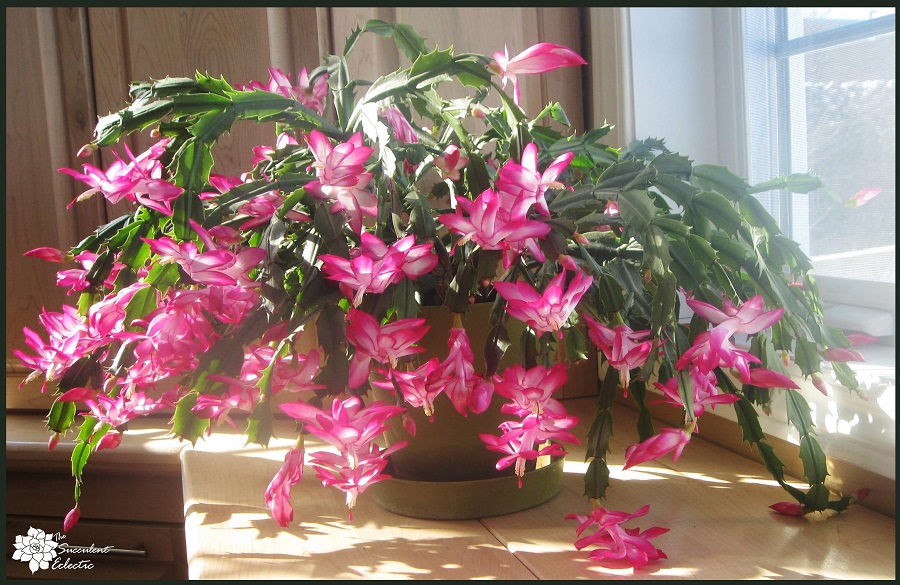
Schlumbergera buckleyi are genuine cactus plants that have no spines, and no true leaves. What appear to be leaves are actually long, wavy and flattened modified stems. Tie the stems to a lattice to encourage climbing, or simply leave loose for a graceful trailing plant. In winter, these plants burst into dazzling display of long-lasting blooms, giving them the common name of Christmas cactus.
Flowering Succulents – Schlumbergera buckleyi – Lighting
Unlike most true cactus, the Christmas cactus will not tolerate full, direct sun, but prefers light, dappled shade. Indoors, they will grow well, but flower poorly in dim locations. To ensure great blooming, provide bright light well supplemented by artificial lighting.
Flowering Succulents – Schlumbergera buckleyi – Watering
I like to grow Schlumbergera in a 50/50 mix of potting soil and cactus mix. This ensures the roots are well anchored in the soil, and the water will drain quickly. Though a very tough plant that will survive months without water, your Christmas cactus will do best with regular watering spring through fall. Water thoroughly until the water drains, and let dry completely before watering again. For the winter months, cut back your watering by about half.
Flowering Succulents – Schlumbergera buckleyi – Blooming
To ensure best blooming for your Christmas cactus, apply a half-strength 10-10-10 fertilizer twice a month spring through summer. This will provide all the nutrients it needs to produce and sustain its blooms come winter. Cut back on winter watering by half. For the most blooms, move your schlumbergera outdoors for the summer to a protected, shady spot. Dappled, diffused sunlight will energize your plant to really put on a show come winter. Be sure to move the plant back indoors well before the first frost.
To shop for Christmas cactus, try big box stores, or for a broader selection, shop here on Amazon.
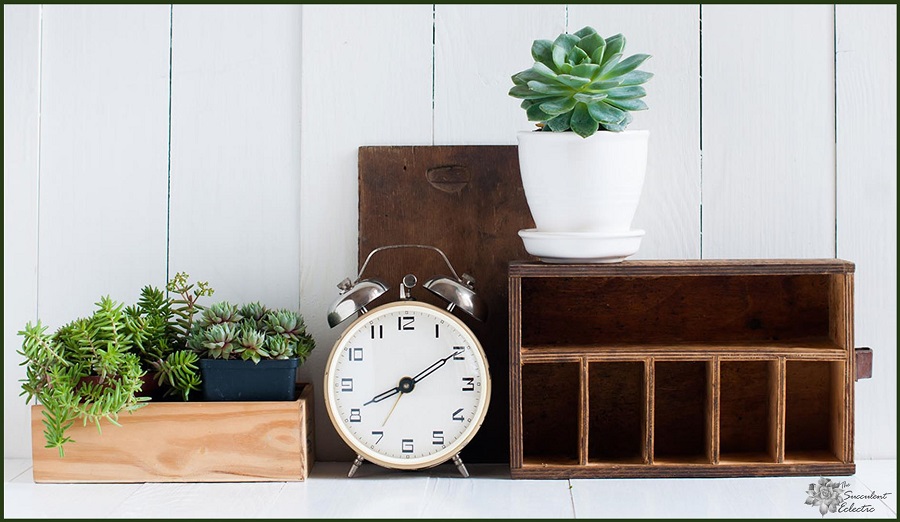
I hope you enjoyed this look at the best succulents to grow indoors. Do you already have succulent houseplants, or will you now give them a try? I would love to know! Please take a moment to leave a comment and let me know your favorite indoor succulents! And if you have any questions about growing the varieties listed above, just let me know. I am happy to help. You can do this! Because life is just better with succulents.
Happy gardening!
P.S. Please subscribe to The Succulent Eclectic! Thanks so much! 🙂
P.P.S. Why not join my Facebook Group for succulent lovers? We talk about succulent care, propagation, succulent identification, and design. It’s a warm and welcoming group that would love to meet you!

